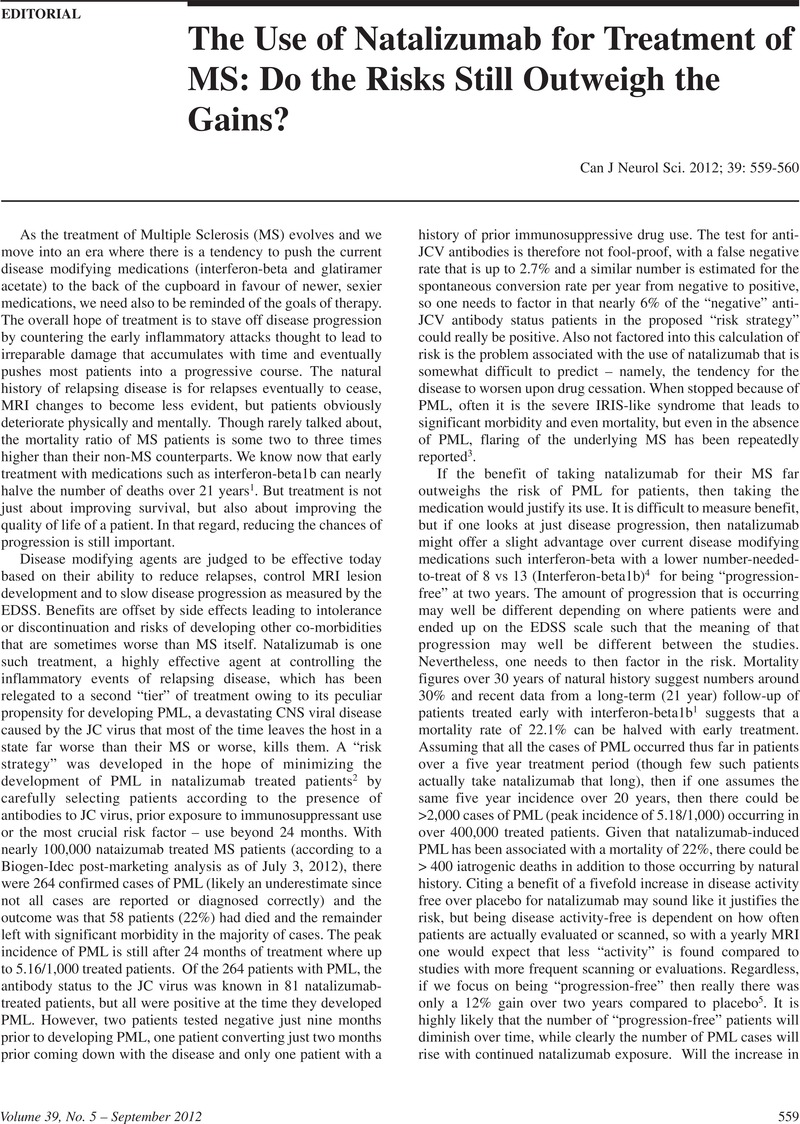No CrossRef data available.
Article contents
The Use of Natalizumab for Treatment of MS: Do the Risks Still Outweigh the Gains?
Published online by Cambridge University Press: 02 December 2014
Abstract
An abstract is not available for this content so a preview has been provided. As you have access to this content, a full PDF is available via the ‘Save PDF’ action button.

- Type
- Editorial
- Information
- Copyright
- Copyright © The Canadian Journal of Neurological 2012
References
1.Goodin, DS, Reder, AT, Ebers, GC, et al.Survival in MS: a randomized cohort study 21 years after the start of the pivotal IFNbeta-1b trial. Neurology. 2012;78(17):1315–22.Google Scholar
2.O’Connor, P.Natalizumab risk stratification: role of a two-step anti-JCV antibody assay. Can J Neurol Sci. 2012;39(5):670–5.Google Scholar
3.Miravalle, A, Jensen, R, Kinkel, RP.Immune reconstitution inflammatory syndrome in patients with multiple sclerosis following cessation of natalizumab therapy. Arch Neurol. 2011; 68(2):186–91.Google Scholar
4.Goodin, DS.Disease-modifying therapy in multiple sclerosis: update and clinical implications. Neurology. 2008;71(24 Suppl 3):S8–13.Google Scholar
5.Havrdova, E, Galetta, S, Hutchinson, M, et al.Effect of natalizumab on clinical and radiological disease activity in multiple sclerosis: a retrospective analysis of the Natalizumab Safety and Efficacy in Relapsing-Remitting Multiple Sclerosis (AFFIRM) study. Lancet Neurol. 2009;8(3):254–60.Google Scholar
6.Freedman, MS.Multiple Sclerosis therapeutic strategies: use second line agents as first-line agents when time is of the essence.. Neurol Clin Prac. 2011;1(1):66–8.Google Scholar




